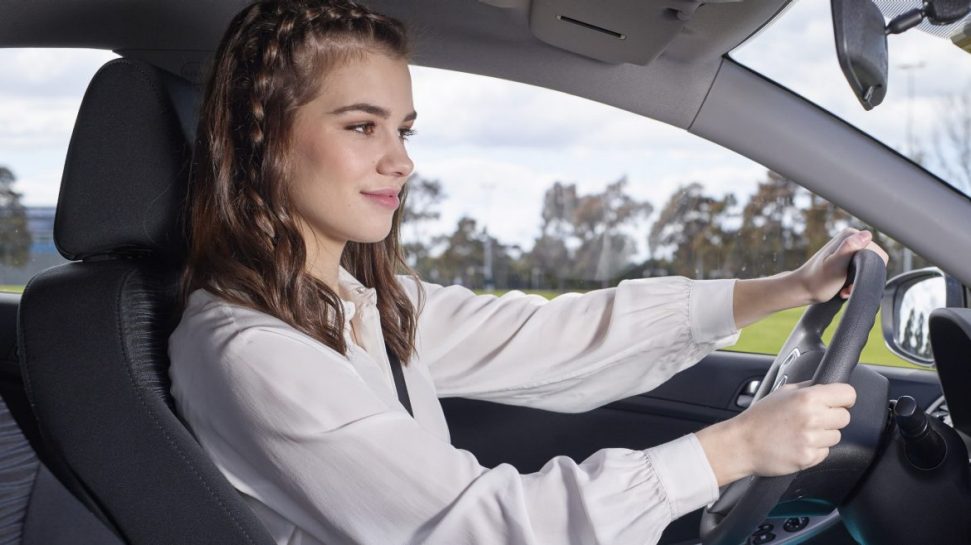Electric vehicles, hybrid cars and eco-driving - tips that will help the planet
In a bid to help reduce our environmental impacts, we look at the benefits of electric and hybrid vehicles and share five tips and tricks to help you reduce your carbon footprint when you hit the road.

With transport accounting for around one-fifth of global greenhouse gases, which equates to 4.6 metric tons emissions per car, per year any changes we make—big or small—can have a positive impact on these emissions. Here, we look at some of the environmental benefits of electric and hybrid vehicles.
Fewer greenhouse gases
Electric cars use a battery powered electric motor instead of running on fuel, so they don’t emit any of the greenhouse gases that traditional cars do. The gap continues to grow as countries move more towards renewable energy. If you’re charging your electric car from solar energy at home, even better! As for hybrid vehicles, their electric-drive technology uses up to 30 percent less fuel, a great step in the right direction.
Less air pollution
As well as carbon dioxide, petrol and diesel engines produce a number of other nasty gases—such as carbon monoxide, nitrogen oxides and particulate matter. In addition to contributing to climate change, traffic pollution can be harmful to our health. With zero emissions, electric vehicles are a brilliant way to help clean up the environment for pedestrians, cyclists and people living near roads.
Reduction in noise pollution
Often underestimated, noise pollution can cause health issues in humans. It can also affect the way animals feed, breed and navigate. Without a noisy engine under the bonnet, electric vehicles are a fantastic alternative to their combustion counterparts.
Less demand for fossil fuels
As more electric vehicles join the ranks, our reliance on fossil fuels and petrol will steadily reduce, too. This is a bonus for the environment not only with reduced carbon emissions burnt daily on the roads, but also from fuel transportation. As support for electric vehicles grows, it will likely increase demand for cleaner energy sources, as well as research and development of more affordable, varied and carbon neutral models.
Did you know that Australia Post is the largest electric delivery vehicle operator with a fleet of over 5,000? Our electric delivery vehicles and electric bikes cover 15 million kilometres each year—that’s more than once round the earth every day!
Five eco-friendly driving tips
While considering an electric vehicle for your next set of wheels, there are a number of things you can do in the meantime to reduce your carbon footprint when driving your petrol or diesel car. Here are some eco-friendly and cost-effective driving tips to help the planet from today.
1. Take it easy
To reduce emissions, take it easy behind the wheel. The engine has to work harder when you accelerate and brake—the faster you go the more fuel you burn. When possible, slow down and speed up slowly. Being heavy footed can increase your fuel consumption by up to 40 percent. Setting cruise control for longer journeys is wise.
2. No idling
Despite popular belief, it’s more efficient to turn off your engine and re-start it than let it idle. Idling causes unnecessary fuel consumption and carbon emissions. Transport Energy/Emission Research (TER) Australia shows that passenger vehicles idle about 21 percent of their driving time contributing to eight percent of total fuel consumption and carbon dioxide emissions. Some newer cars automatically turn off the engine at a red light and re-start once you take your foot off the brake.
3. Consider if you need to drive
Think about whether driving to work, the shops or to the kids’ school is best for your health, wallet and the planet. Every journey counts. Is it possible to carpool, walk or take public transport?
4. Reduce the drag and weight
Going back to our science classes, wind resistance of items like roof racks and storage boxes can really reduce fuel economy and add carbon dioxide emissions, particularly at higher speeds. The same goes for extra weight—the more weight in the car, the more fuel it takes to get moving. Remember to take the storage box off your roof when you return from your holidays, and keep your golf clubs at home if you don’t need them.
5. Turn off the aircon
Do you really need it on? It’s no secret that air conditioning adds to your fuel bill. When it’s hot, it can be as much as 25 per cent of your fuel consumption. Don’t set your air conditioning temperature lower than you need, and in slower traffic, consider opening your window instead. On the highway, turn it on though because an open window can cause drag at higher speeds.
Learn more about all the ways we are committed to helping build a sustainable society.


